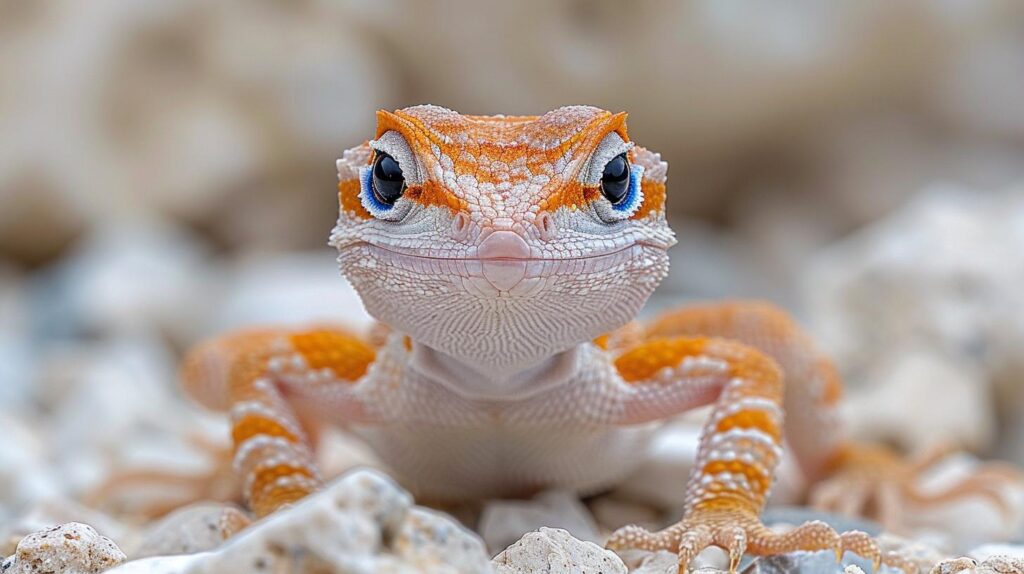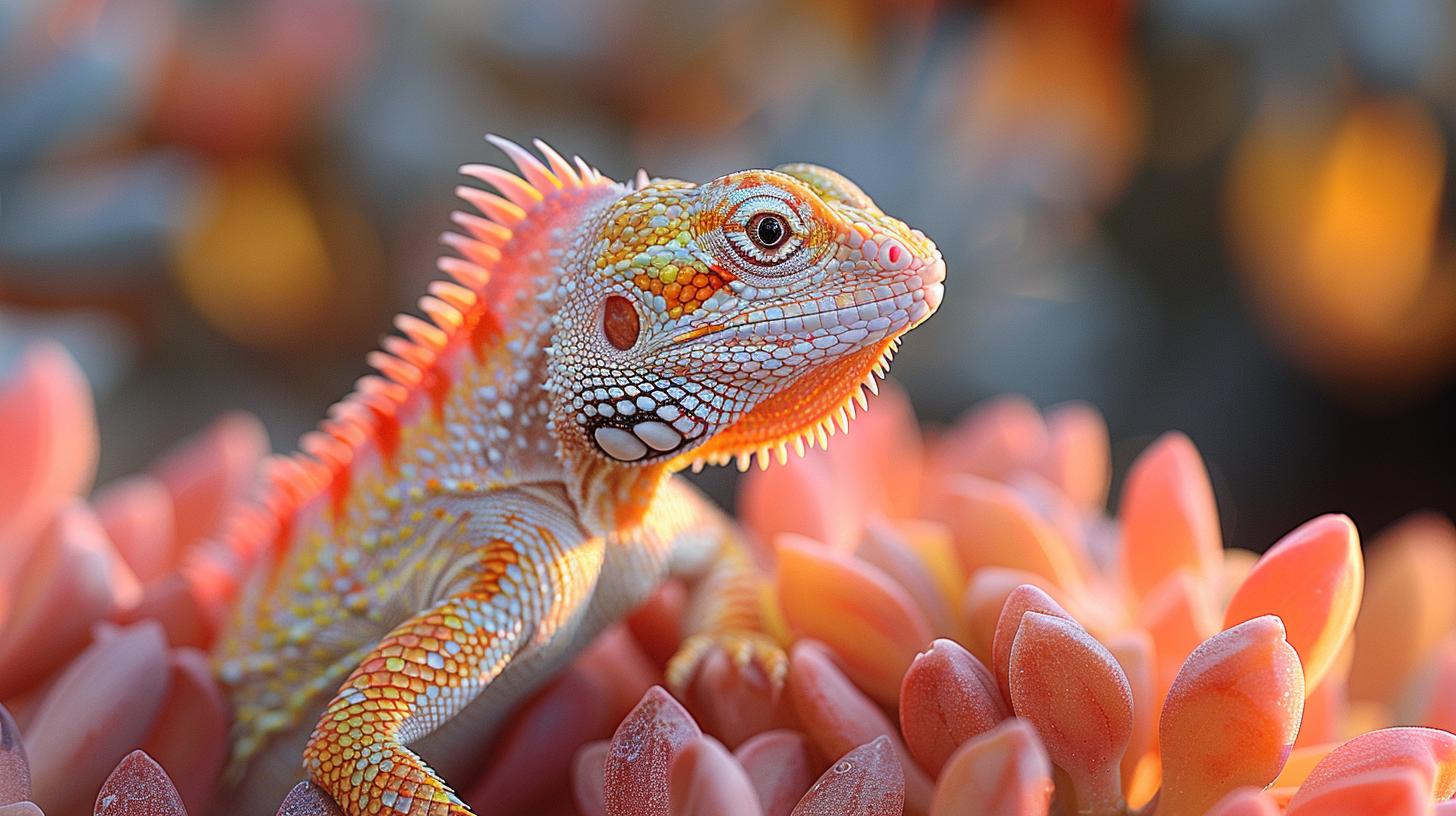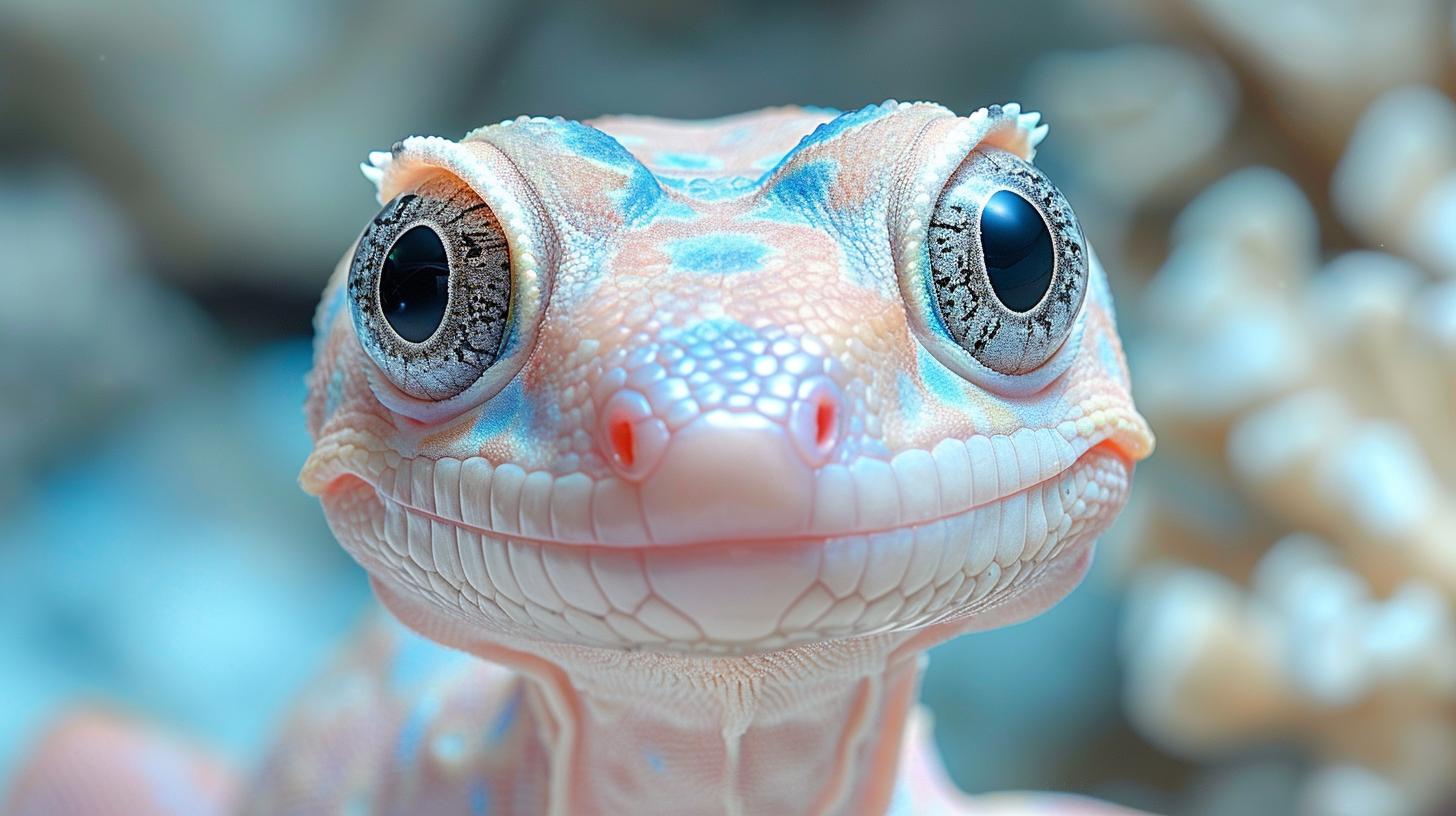Boosting Reptile Bone Health With Proper Calcium Intake

- Exploring the Vital Role of Calcium in Reptile Health
- The Telltale Signs of Calcium Deficiency in Reptiles
- The Science of Calcium Absorption in Reptiles
- Shopping for Supplements
- Feeding Practices That Promote Optimal Calcium Intake
- Creating a Calcium-Friendly Habitat
- Monitoring and Adjusting Your Reptile’s Calcium Intake Over Time
- Frequently Asked Questions
Exploring the Vital Role of Calcium in Reptile Health
Ensuring your reptile receives sufficient calcium for reptiles is not just about building strong bones; it's about safeguarding their overall health and vitality. This essential mineral plays a pivotal role in various physiological processes, including muscle function, nerve signaling, and blood clotting. Delving into the significance of calcium reveals its fundamental value in the thriving life of these fascinating creatures.
At the core of understanding reptile health lies the acknowledgment of calcium's myriad roles beyond merely constructing robust skeletal structures. It's instrumental in facilitating critical bodily functions such as nerve impulse transmission and muscle contraction. A deficiency in this vital nutrient can impair these processes, leading to severe health ramifications that might not be immediately apparent to even the most attentive reptile caretakers.
Identifying signs of calcium deficiency is crucial for preventing long-term damage. Symptoms can range from subtle shifts in behavior to more conspicuous physical abnormalities like weakened jaws or softened bones. Recognizing these indicators early can make a significant difference in managing and rectifying potential deficiencies before they escalate into metabolic bone disease (MBD), a common yet preventable condition with dire outcomes.
The science behind calcium absorption in reptiles unveils a complex interplay between diet, supplementation, and environmental factors. Vitamin D3 emerges as an indispensable ally in this process, aiding calcium absorption efficiently when synthesized under appropriate UVB lighting conditions. Understanding these mechanisms underscores the importance of creating a habitat that mimics natural sunlight exposure, thereby enabling your reptile to metabolize calcium effectively and maintain optimum health levels.
The Telltale Signs of Calcium Deficiency in Reptiles
Reptile owners know that their scaly friends require a special kind of care, particularly when it comes to diet and nutrition. Calcium for reptiles plays a crucial role in maintaining a healthy skeletal system, but it's also vital for other bodily functions. Unfortunately, when reptiles don't receive enough calcium, they can develop noticeable and potentially severe health issues. Identifying these signs early can be the key to preventing long-term damage.
One of the first symptoms of calcium deficiency in reptiles is lethargy or decreased activity levels. Reptiles may show less interest in their surroundings, move less than usual, or struggle to support their body weight properly. This decrease in energy is often linked to the insufficient muscle contraction which is reliant on calcium.
Weakness in the jaws and facial bones, leading to difficulty feeding, is another red flag indicating a lack of necessary nutrients like calcium. Over time, these symptoms can escalate into more serious conditions such as rubbery bones or metabolic bone disease (MBD). MBD affects the structural integrity of bones - making them weak and prone to fractures - and is notoriously difficult to reverse if not caught early.
Considering these risks underscores the importance of regular observation for signs that could indicate calcium deficiency:
- Lethargy or decreased activity
- Difficulty supporting body weight
- Weak jaw or difficulty feeding
- Softening or bending of bones
- Visible bone deformities
However, recognizing these symptoms is just part of ensuring your reptile's health. Owners must respond promptly by consulting with a veterinarian experienced in reptile care who can recommend appropriate dietary adjustments or supplementation regimes.
Furthermore, while observing for signs of deficiency remains critical, proactively preventing these issues by providing a balanced diet enriched with the right type and amount of *calcium for reptiles* cannot be overstated. Ensuring your pet has access to UVB lighting, which aids in vitamin D3 synthesis necessary for calcium absorption, alongside a well-regulated habitat, will play significant roles in keeping your reptile healthy.
This section paves the way towards understanding how best to ensure optimal calcium intake through mindful feeding practices and supplement choices - crucial elements that contribute significantly towards preventing calcium deficiency and fostering long-term health and vitality in our reptilian companions.
The Science of Calcium Absorption in Reptiles
The conversation around reptile health significantly highlights the essence of calcium, a mineral pivotal not just for humans but markedly so for our cold-blooded companions. While most pet owners understand the importance of providing a calcium-rich diet, delving into the intricacies of how reptiles metabolize this vital nutrient offers enlightening perspectives on their complex nutritional needs.
The absorption process is more sophisticated than merely ingesting calcium for reptiles; it's about ensuring that every bite contributes to their skeletal strength, muscle function, and overall vitality.
At the heart of effective calcium utilization in reptiles lies Vitamin D3 - a critical element enabling calcium absorption from the gut into the bloodstream. Without adequate levels of this vitamin, even copious amounts of dietary calcium would be rendered useless, as they simply pass through the digestive system without benefiting the animal. It brings forth an intriguing aspect of reptile care: UVB lighting.
Unlike mammals that can obtain vitamin D through their diet or by supplementing, most reptiles synthesize Vitamin D3 on their skin under UVB light, mimicking the natural sunlight in their habitats. This synthesis is crucial, emphasizing why setting up habitats with appropriate UVB lighting is not just beneficial but essential for captive reptiles' health and longevity.
Understanding Vitamin D3's Role
Vitamin D3 does not only facilitate calcium absorption; it also influences calcium metabolism within the body, ensuring that once absorbed, calcium is deposited in the right places-namely bones and teeth-and not excessively in soft tissues where it could lead to further complications. This balance underscores a nuanced ecosystem within these creatures that necessitates a meticulous approach to their nourishment and living conditions.
In observing how different species react differently to sources of UVB light or dietary vitamin D3 supplements, caretakers must cater to each species' unique requirements to promote optimal health.

Variabilities in Reptilian Calcium Metabolism
It's intriguing to note how variably different reptile species metabolize calcium; factors such as age, general health condition, and pregnancy status can influence these metabolic pathways markedly. For example, young growing reptiles have higher calcium needs to support their rapid development compared to adults whose need stabilizes somewhat. Moreover, gravid (pregnant) females often require increased levels of calcium to ensure proper eggshell formation-a deficiency at this stage could have devastating effects on both mother and offspring.
Through understanding these critical nuances surrounding calcium intake and metabolism, pet owners are better positioned to provide care tailored specifically towards enhancing their reptilian friend's health and well-being systematically-an endeavor that starts with knowledge but enriches with application.
Shopping for Supplements
In the quest for maintaining optimal reptile health, selecting the appropriate *calcium for reptiles* supplement is a pivotal step. The market offers an array of choices, which can sometimes overwhelm reptile owners.
However, by understanding the specific needs of your pet, you can make informed decisions that bolster their bone health and overall well-being. It's not merely about picking any calcium supplement off the shelf; it's about finding what works best for your reptilian companion, considering their species, diet, and environmental factors.
When exploring options for *calcium supplements*, it's crucial to differentiate between those that contain vitamin D3 and those that do not. Vitamin D3 plays a fundamental role in calcium absorption in reptiles, especially for those with limited exposure to natural or artificial UVB light sources. For these reptiles, a calcium supplement enriched with vitamin D3 is often recommended.
On the other hand, if your pet has ample access to UVB lighting-mimicking their natural sunlight exposure-a plain calcium supplement might suffice. This choice significantly impacts their ability to metabolize calcium efficiently, thus preventing diseases such as metabolic bone disease (MBD).
Furthermore, the form of calcium supplement-powdered versus liquid-can influence its usability and effectiveness in meeting your reptile's nutritional requirements. Powdered calcium is favored for its ease of dusting over live insects or mixing into foods. This form ensures that your pet receives its necessary nutrients during mealtime without significant disruption to its feeding habits. Liquid forms can be beneficial for precise dosing or when dealing with animals who are finicky eaters or have special dietary needs.
| Supplement Type | Best Used For |
|---|---|
| Calcium with Vitamin D3 | Reptiles with limited UVB exposure |
| Plain Calcium | Reptiles with ample UVB light exposure |
| Powdered Calcium | Easy application on food/insects |
| Liquid Calcium | Precise dosing or special dietary needs |
Adapting supplementation methods based on these considerations helps ensure that your reptile benefits from an ideal balance of nutrients required for robust bone health and physiological functionality. It also addresses individual needs tailored to species-specific dietary regimens and environmental adjustments necessary for thriving in captivity.
Feeding Practices That Promote Optimal Calcium Intake
Ensuring reptiles receive the correct amount of calcium is imperative for their health. Reptile owners must understand that providing a balanced diet goes beyond merely offering food; it's about meeting specific nutritional requirements. This includes incorporating both natural food sources rich in calcium and supplements as necessary. A variety of calcium-rich foods should be part of your reptile's menu. These include:
- Leafy greens like collard greens, mustard greens, and turnip greens
- Squashes and carrots for those species that consume vegetables
- Calcium-dusted insects such as crickets, mealworms, or dubia roaches for insectivores
Additionally, calcium supplements come in different forms, including powders and liquids. Powders can easily coat feeder insects or be mixed into vegetable portions, making them an excellent option for most feeding regimes. On the other hand, liquid supplements can be added directly to drinking water or misted onto food items. Choosing whether to opt for *calcium with Vitamin D3* or without depends on your reptile's specific needs and UVB exposure.
Frequency of supplementation plays a crucial role in promoting optimal calcium intake without verging into toxic levels-too much calcium can be harmful. Achieving this balance typically requires adopting a schedule based on the species' age, health status, and dietary intake.
Younger and pregnant reptiles often need more frequent supplementation due to their higher growth demands and physiological needs. Conversely, adult reptiles not undergoing rapid growth might require less frequent supplementation but should still maintain a consistent intake to support overall health.
Understanding the intricate relationship between diet control and calcium absorption is critical in preventing conditions such as metabolic bone disease (MBD), a common issue arising from calcium deficiency in reptiles. Ensuring your pet has access to UVB lighting aids in Vitamin D3 synthesis-essential for calcium absorption-is another aspect of promoting healthy bones through diet.
It's essential to keep adapting these feeding practices as your reptile grows and its dietary needs evolve over time. Observing any changes in behavior or physical condition can signal when adjustments are needed in their calcium intake or overall diet. Moving forward, creating a tailored approach to each individual pet's needs will ensure they thrive under your care.

Creating a Calcium-Friendly Habitat
Importance of a Properly Set Up Habitat
Creating a calcium-friendly habitat is pivotal for the health and longevity of reptiles, much like ensuring they have the right diet. This intricate process involves more than just setting up a tank with basic elements; it requires a deep understanding of what constitutes an environment conducive to not only absorbing calcium for reptiles but also maximizing its benefits.
An optimal habitat mimics the natural conditions your reptile would experience in the wild, including appropriate UVB lighting, temperature, and humidity levels. These factors play a significant role in how effectively your reptile can metabolize calcium, impacting their bone health and overall well-being.
The Role of UVB Lighting
UVB lighting serves as an essential component in a calcium-friendly habitat. For reptiles, synthesizing vitamin D3 through their skin under UVB light is crucial for calcium absorption. Without sufficient exposure to UVB light, reptiles cannot produce enough vitamin D3, leading to poor calcium metabolism and potentially severe health issues such as metabolic bone disease (MBD).
It's important for pet owners to invest in high-quality UVB bulbs that cover a substantial area of their pet's living space, ensuring the light closely mimics the ultraviolet spectrum found in natural sunlight. This setup will facilitate efficient vitamin D3 synthesis and subsequent calcium absorption necessary for maintaining strong bones and a robust physique.
Maintaining Temperature and Humidity Levels
Additionally, controlling the tank's temperature and humidity levels is equally crucial for fostering a calcium-friendly habitat. Reptiles are ectothermic (cold-blooded) animals that rely on external heat sources to regulate their body temperature-a factor that directly influences their ability to digest food and absorb nutrients like calcium efficiently.
Thus, maintaining an appropriate thermal gradient within the enclosure allows your reptile to thermoregulate effectively, optimizing nutrient absorption processes including those critical for bone health. Furthermore, keeping humidity levels within species-specific ranges supports hydration and skin shedding processes while preventing respiratory infections that could otherwise divert physiological resources away from nutrient metabolism efforts.
Implementing these habitat essentials fosters an environment where calcium metabolism is optimized, laying down the foundation for robust skeletal development and overall vitality among captive-held reptiles. By prioritizing these key aspects within your pet's enclosure, you're significantly improving their chances of living out healthier lives under your care.
Monitoring and Adjusting Your Reptile’s Calcium Intake Over Time
As we conclude our journey through the essential landscape of calcium for reptiles, it's clear that this mineral is far from a simple dietary supplement; it's a keystone of their very survival and thrive. The exploration from its critical roles in bodily functions to addressing the symptoms of deficiency, and onto the science behind calcium metabolism, paints a comprehensive picture of how intertwined calcium is with reptile health.
Proper intake doesn't just prevent diseases like metabolic bone disorder but elevates the overall vitality of these fascinating creatures.
Selecting the right calcium supplement is more than a task-it's an aspect of care that can significantly shape your reptile's well-being. From powdered varieties bolstered with vitamin D3 to adjusting feeding practices to encompass calcium-rich diets, each choice made has profound implications on their health.
Moreover, creating an environment that mirrors their natural habitat empowers them for optimal absorption and utilization of calcium. These steps are not mere suggestions but pivotal actions towards ensuring prolific health in our reptilian companions.
Intrigued by what you've learned here about boosting reptile bone health with proper calcium intake? There's more from where that came from. Dive into the depths of our content library for insightful articles designed to guide you in providing unparalleled care for your pets.
Whether you're seeking detailed instructions on habitat setup or looking for nuanced advice on nutrition and health monitoring over time, our website is your premier resource. Click through today, and let's embark together on enhancing the lives of our scaly friends with every piece of knowledge at our disposal.
Frequently Asked Questions
How Do You Give Reptiles Calcium?
Providing reptiles with calcium is crucial for their bone health and overall well-being. Owners can dust their pet's food with a calcium powder supplement specifically designed for reptiles.
This method ensures the reptile consumes the necessary amount of calcium as part of its regular diet. Another option involves placing a cuttlebone inside the habitat, allowing the reptile to ingest calcium at its own pace.
Is Calcium With D3 Better Than Without for Reptiles?
Whether to use calcium with D3 or without depends on the specific needs of the reptile and its exposure to UVB lighting. Reptiles that have limited exposure to natural sunlight or UVB light from special bulbs benefit from supplements that include Vitamin D3, as it aids in calcium absorption.
However, for reptiles receiving ample UVB light, which enables them to synthesize their own Vitamin D3, a plain calcium supplement is often sufficient.
Can You Give Reptiles Too Much Calcium?
Yes, it is possible to give reptiles too much calcium, leading to health problems such as hypercalcemia, which manifests through symptoms like lethargy and muscle weakness. An excess of dietary calcium can disrupt the balance of other important minerals and affect organ functions negatively.
Following recommended dosages on supplement packaging and consulting with a vet for tailored advice ensures safe supplementation.
How Often Should I Use Repti Calcium?
The frequency of using Repti Calcium depends on several factors including the species of the reptile, its age, diet composition, and whether it is breeding or not. Generally speaking, adding calcium to a reptile's diet 2-4 times per week is common practice for many species; however, younger or egg-laying females might require more frequent supplementation.
It's best to seek guidance from a veterinarian who can provide recommendations based on your specific animal's needs.
Leave a Reply
You must be logged in to post a comment.